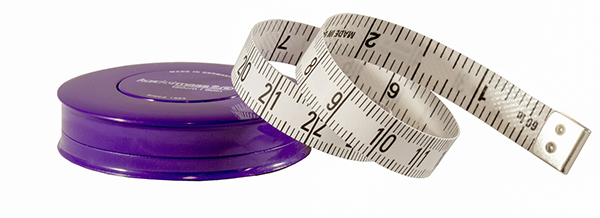
Since ancient times the central role of the breath in our health and vitality has been recognized by cultures around the world. In India the breath was closely connected to Prana – a kind of life force energy. In China they made a similar connection, connecting the breath so strongly with our vital energy that the same character is used for this energy (qi) and our breath (氣). In Hawaii they talk about Ha, and even the Christian scriptures refer to the ‘breath of life’. Even in modern times we have many common expressions which reflect the way breath influences how we experience life. We talk about holding our breath in anticipation, or breathing easy when we relax. And yet many of us do not pay a lot of attention to our breath, until there is a problem with it.
Early Breathing Challenges
My personal experience led to me paying a lot of attention to my breath from a very early age, quite simply because for many years it was often a struggle to breathe at all. From a young age I had chronic asthma, repeated chest infections which developed into bronchitis and pneumonia, and even a collapsed lung which saw me hospitalized extensively. I was talking to one of my older siblings recently and she told me that her early memories of me were visiting me in hospital and wondering whether I would die or not. I can look back at those memories without any trauma, perhaps even fondly, because I have long since moved past the challenge of those years, but a lot of my early life was focused on just taking each next breath.
My mother played a big role in helping me to move past those issues. She trained as a naturopath and worked to find the root causes of my repeated illness. She changed my diet and gave me herbs to help clear and strengthen my lungs, and she taught me my first basic breathing exercises to help me to regulate my breath. She also encouraged me to learn to swim as a way of further developing the resiliency of my breathing system.

All of these things made a big difference, and by the time I was moving into young adulthood I had my asthma fully under control and chest infections were becoming an infrequent occurrence rather than something I went through several times a year. But still my breathing presented limitations for me. I was engaged in a variety of sports and performed quite well, but I would become fatigued easily and always had the feeling that I was not reaching my full potential. My ribs had become dished from my struggles with breathing at an early age, and while I knew it was preferable for me to breath through my nose, I still found myself reverting to breathing through my mouth on a regular basis. My breathing had improved and I had found my way out of crisis, but I had a lot further to go to optimize my breath and truly be able to breathe freely in a way that supported my life and activity fully.
Pieces of the Breathing Puzzle
As part of my ongoing quest to understand my body and gain full health, I took up yoga. I learned a lot about my breath within those yoga classes, exploring a variety of breathing techniques within the practice of pranayama that seemed quite exotic to me at the time. And the regular emphasis on using the nose to breathe abdominally even while practicing challenging sequences of yoga postures also helped me to reinforce a habit of nasal breathing throughout my other activities in life, meaning that I resorted to mouth breathing less and less frequently. It became easier for me to maintain a relaxed pattern of breathing as a regular habit.
Then one day I was swimming laps at the local community swimming pool – I had kept this up off and on from my younger years when my mother had introduced me to it to strengthen my lungs. I had been pushing myself quite hard and when I took a break at one of the ends of the pool I noticed my breathing pattern as I stood their recovering. I was breathing fast and heavy – panting, but with only my abdomen moving. There was something about this that seemed unnatural and not quite right. I had really ingrained this habit of breathing abdominally from my yoga practice – but perhaps it didn’t fit here?

I continued to learn about the human body and health. I read all my mother’s books from her naturopathic studies. I studied human anatomy, physiology and sports science, and qualified as a personal trainer. I searched the database at my local library and read every book I could find about breathing and breathwork from both a medical and esoteric perspective. I picked up lots of useful pieces of information about the breath from all of these sources, but I found that there were some common themes and limitations within the texts I was able to find.
The more medically oriented texts were great at providing facts, figures, and measurements. They also often comprehensively described various extreme pathologies and clinical approaches for treating them. But they didn’t give any practical guidance about how to work with the breath to develop healthy breathing habits to maintain the health of the lungs in the first place. Other texts often focused on espousing the virtues of a single breathing technique, recommending it as the solution for every ill. Often these approaches were quite contradictory, with some recommending breathing with the abdomen, and others breathing with the ribs. Still others focusing on only whether the mouth or nose was used, or the rhythm of the breath. And finally, some texts approached the breath in a more esoteric way. These often presented a multitude of breathing techniques – with esoteric descriptions of what you might use them for, but they generally lacked any clear physiological description of what the breathing techniques do and how they worked.
It seemed that there was a very piecemeal understanding of the breath in the literature, with a division between those that focused on single ‘one size fits all’ breathing techniques, and those that presented a variety of techniques but from a more esoteric or mystical perspective.
Many of those writing about ‘one size fits all’ approaches to working with the breath could point to many examples of people who had been helped by using their breathing technique – which makes sense if that happened to be the breathing technique that they needed to help them with the issues that they were experiencing. But I also remember speaking with a high performance athlete who had been referred to a breathing specialist to help with their breathing. This specialist taught one of these ‘one size fits all’ techniques – specifically learning abdominal breathing. This worked really well at helping the athlete to regulate their breathing when they were resting and recovering, but when they tried to apply this same breathing technique at practice or in games – they found it just didn’t work for them as they sprinted down the court (they were a top level basketball player). They told me that several of their athlete friends had the same experience when seeking help with their breathing. The techniques were great in some situations – but just did not work for them in others, and so in the end they just gave up on using them at all. Clearly one size did not fit all… situations. And if there really was just one approach to breathing that could address all breathing needs, why did other people also teach other completely different methods of breathing with just as many positive reports of people it had helped? Perhaps there was more to the picture, that might be able to reconcile these different approaches and give a more complete understanding of how to breathe effectively in different circumstances.
Putting Together the Breathing Picture
As a young adult I also began to study Traditional Chinese Medicine and Qigong. I had become fascinated with the idea of being able to feel and work with our internal life force energy after some early exposure to some basic qigong practices, again through my mother, and studying Chinese Medicine was a natural extension to the knowledge I had gained from my own health struggles and exposure to my mother’s naturopathic practice. Within Chinese Medicine I discovered a framework of philosophy that recognized the importance of contrasting states, and methods and techniques to work with each of these harmoniously. The concept of Yin and Yang, and Taiji – the harmonious interplay of these opposing states, is central to Chinese philosophy. To focus on only one and not the other is absurd, and so every aspect of Traditional Chinese Medicine includes ways of working with both the Yin or more passive energy and state, and Yang or more active energy and state to bring them into harmony.
The practice of qigong or course embodies the deep principles of Chinese philosophy. It works with three primary tools – the mind, body, and breath, to regulate and develop awareness and skill with our vital energy. This includes breathing techniques for working with our energy in both a yin/relaxed, or yang/active way. Finally all of the individual pieces of information about the breath that I had learned over many years could come together into one complete picture.
The way the principles and methods were described were often still in rather abstract terms – referring to concepts from Chinese Medical theory and philosophy, but my previous study of anatomy and physiology and the breathing function from a western perspective made the relationship between these two different ways of describing things clear. I was able to translate from one into the other and put the pieces together to truly understand my breath.

It became clear to me that each of the ‘one size fits all’ breathing methods that I had learned about previously had a role to play within the overall picture of our breath. They each had specific benefits that were useful for addressing particular issues and dealing with specific circumstances, but they were all just one part of a greater whole. Understanding the harmonious interplay of yin and yang put each in the correct context within the overall picture of a natural way of breathing which adapts easily and instinctively to the different challenges and situations we face in life. With an understanding of the proper context I was able to apply these breathing methods appropriately in different situations ranging from deep meditation to the extreme physical challenges of kung fu practice, and everything in between.
It also gave me a much clearer understanding of how our breath affects our mind, body, and energy in nuanced ways. Many of those seemingly more esoteric breathing techniques I had learned previously also started to make more sense as I could now understand how they worked in terms of anatomy, physiology, chemistry, and physics. Instead of mysterious and esoteric, they became practical and useful. Working with my breath became a more powerfully effective tool for me to use to bring health and vitality to my body and mind, and direct the energy within my body.
Getting the Most from your Breath
I think this practical understanding of the breath is hugely beneficial. Clearly it can help people who have challenges with their breathing to establish healthy habits to support them in their lives, and even people who don’t have any apparent issues with their breathing can also benefit as they learn to use their breath as a more powerful tool to work with both their mind and body.
For myself, from my early beginnings of having so many challenges with my breathing in my youth, and then a long path of learning and discovery as I worked to understand an improve my breath, I now feel comfortable and at ease with my breath. By learning deeply about my breath I have been able to reconnect with naturally healthy breathing patterns which now come instinctively to me. My ribs are still a bit dished – some experiences in life continue to leave their mark on us, but even this has been reduced over the years from developing healthy natural breathing habits. My breathing patterns now change and adapt naturally and easily to the different situations I find myself in, supporting physical activity and external expression of energy at times when needed, and facilitating rest, recuperation, and introspection at other times when desired. And when I choose to consciously tap into my breath, I can use it as a powerful tool for working with my mind, my body, and for directing my energy.
To help people get started with learning about and developing skill with their breath I have a free online course on developing a Complete Natural Breath. This teaches simple breathing exercises to help you get each of the key breathing spaces and breathing muscles working effectively together. You learn to work with the abdomen, ribs, and shoulders, and develop strength, flexibility, and co-ordination with each of the key breathing muscles so that you can breathe freely and naturally into each of these spaces. These are then combined into a Complete Natural Breath which allows you to move easily between breathing from each of these spaces as you respond to different physical, mental, and emotional requirements in your daily life. It is a great place to start, and acts as a solid foundation for diving deeper into understanding other aspects of the breath if you want to go further into this with other courses.
You can gain free access to The Complete Natural Breath course here.
3 Comments. Leave new
Excellent article, John. Thanks for sharing these intimate details. I have done the breath course that you offered a couple of years ago. It is so helpful and I continue to practice several of the exercises regularly!
Looking back, I credit your on line qigong work outs for getting me through the 2 year Covid period! Much Appreciation and Thanks!
Thank you John for the fantastic sharing. You are generous and patient with your time. You care for people. I will continue doing the fives waves you sent me. Love and light.
John, very interesting how you began to be so knowledgeable about breathing and chi practices.
AND thank you for always sharing why & how exercises/practices work within our body.
…My brain remembers & uses knowledge better if it knows the why and how